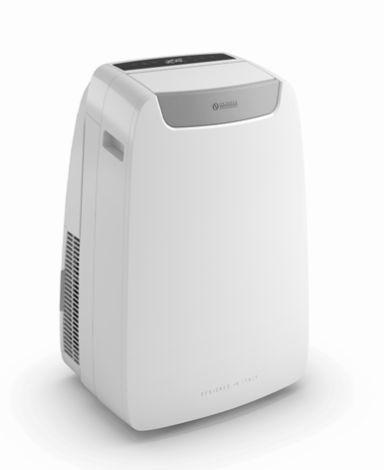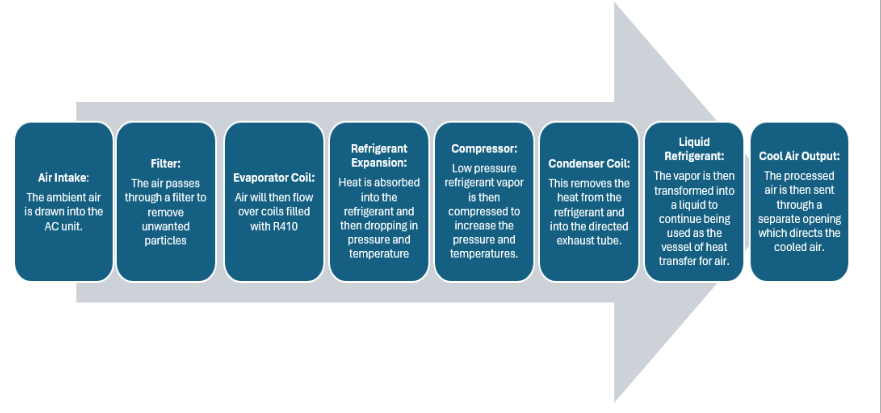Thermodynamics Design and Analysis of Air Conditioning
As part of ENGR 315 Thermodynamics, I collaborated with a teammate to conduct a detailed analysis and design improvement study on a commercial portable air conditioning unit, the Olimpia Splendid Dolceclima Air Pro 14 HP. The objective of the project was to apply thermodynamic principles to evaluate the system’s efficiency and propose engineering modifications that could meaningfully enhance its performance.
Our analysis began with a complete thermodynamic system evaluation using real product specifications and manufacturer data. We modeled the refrigeration cycle with R290 refrigerant and determined that the system achieved an actual coefficient of performance (COP) of 2.6. When compared to the theoretical Carnot COP of 15.2, this revealed an efficiency gap of nearly 83%, underscoring the substantial impact of irreversibilities such as compressor inefficiency, non ideal heat exchange, and refrigerant pressure drops. By performing detailed entropy and energy balance calculations, we were able to trace these inefficiencies to specific components, gaining insight into where meaningful improvements could be made.
To address these limitations, our group proposed and modeled several engineering innovations. One key modification was the use of a variable speed compressor, which would allow the system to adjust power consumption to match cooling demand rather than operating continuously at full load. Another improvement involved the integration of microchannel heat exchangers, which provide a higher surface area to volume ratio and improve heat transfer efficiency while reducing refrigerant requirements. Finally, we evaluated a refrigerant substitution, replacing R290 with R32. Through our calculations, we demonstrated that this change alone could raise the COP from 2.6 to 4.85, an 86.5% improvement in efficiency.
The potential impact of these improvements is considerable. Increasing the COP to this level would not only reduce operating costs by an estimated 40–50% but also decrease environmental impact through lower energy demand. The inclusion of microchannel heat exchangers and variable-speed compressors would further align the design with advanced HVAC technologies currently being deployed in high-efficiency systems. Collectively, these modifications would make the portable air conditioning unit more sustainable, cost-effective, and competitive within the marketplace.
This project strengthened my ability to apply theoretical thermodynamic principles to practical engineering systems while also highlighting the importance of sustainable design. By combining rigorous quantitative analysis with forward-looking design improvements, our team demonstrated how existing technologies can be optimized to meet growing demands for efficiency and environmental responsibility. The experience reinforced not only my technical knowledge but also my capacity to collaborate effectively and propose impactful engineering solutions.
Olimpia Splendid Dolceclima Air Pro 14 HP
Portable air conditioning unit
Operation Diagram
Flow Chart of portable AC unit


